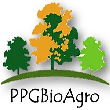MASTER'S DEFENSE BOARD: ISABEL DE CAMPOS BRAGA
STUDENT: ISABEL DE CAMPOS BRAGA
DATE: 07/29/2022
TIME: 08:00
LOCATION: Web Conference - Google Meet
TITLE: CHICORIA-DO-PARÁ (Eryngium foetidum L.) ANTIOXIDANT COMPOUNDS AS A FUNCTION OF DIFFERENT SHADEDING AND DRYING METHODS
KEYWORDS:Eryngium foetidum L.; dehydrated food; condiment; bioactive compounds
PAGES: 58
GREAT AREA: Agricultural Sciences
AREA: Food Science and Technology
SUBAREA: Food Science
SPECIALTY: Chemistry, Physics, Physico-Chemistry and Biochemistry of Food. and Food Raw Mats
SUMMARY: The chicória-do-pará is a vegetable considered an ethnomedicinal agent and its consumption is usually with the fresh plant, as a condiment. In Brazil, the cultivation of this vegetable is carried out in urban backyards and vegetable gardens, in small areas, and the use of screens in production is little reported. The nutritional importance of this vegetable is related, especially, to the content of antioxidants present in the leaves. Thus, seeking alternatives that can increase the content of these bioactives in chicória-do-pará, and their production, is one of the targets of this research. Another point is the increase in the conservation and storage time of this vegetable, through the drying of the leaves since dehydrated foods can be an alternative for consumption for prolonged periods. At first, we aimed to evaluate the stability of antioxidant compounds of this vegetable, submitted to different drying methods, since in the literature, few data on the influence of the drying method on the biochemical composition of chicória-do-pará are found. Regarding the drying methods, the chicory leaves were submitted to drying in a forced air circulation oven at 40, 50, 60 and 70 ºC, as well as drying by exposure to sunlight and shade. After drying, biochemical analyzes were performed (flavonoids, phenolic acids, total phenols, DPPH, ABTS and FRAP). In the “Solar” treatment, significant results were not observed for all the analyzed variables, when compared to the other drying methods used. The flavonoid content in the plants was higher when dried in an oven at 50 and 60 ºC and in the “shade”. Phenolic acids and antioxidant activity by ABTS report significant results in plants submitted to “shade” drying, as well as for phenolic compounds and antioxidant activity by DPPH and FRAP, in addition to drying in an oven at 50 ºC and in “shade”, the use of oven at 40ºC also revealed significant results. Thus, we can conclude that the “shade” drying proved to be promising, which makes it a good option for drying chicória-do-pará, with good stability of the compounds when compared to the other evaluated methods, since the plants subjected to this treatment showed a high content of flavonoids, ac. phenolics, total phenols and high antioxidant activity demonstrated by ABTS, DPPH and FRAP assays. Drying in an oven at 70 ºC was not effective for the maintenance of any of the compounds analyzed.
MEMBERS:
Internal - 96420004 - IVONE VIEIRA DA SILVA
Internal - 117161001 - SANTINO SEABRA JUNIOR
External to the Program - 856.728.821-53 - RENE ARNOUX DA SILVA CAMPOS - UNESP
External to the Institution - FRANCIELY DA SILVA PONCE - UFMT
External to the Institution - MÁRCIO ROGGIA ZANUZO - UFMT



